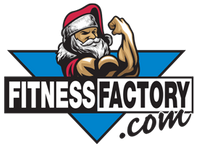
Bars & Collars
Strength Starts Here: Find Your Perfect Bar at FitnessFactory.com!
Bars are built to support your biggest lifts, and the right barbell can elevate your entire training experience. FitnessFactory.com offers Olympic bars, curl bars, trap bars, and specialty bars for every lifter and workout style. Choose durable, well-balanced bars designed to handle heavy use and help you hit new PRs.
We answer your common questions about bars & barbells!
What types of bars are available?
What types of bars are available?
There are several types of bars designed for different lifting needs:
- Standard Bars: These are the most common bars, typically 5-7 feet long with a 1-inch diameter. They are used for general strength training exercises and fit standard weight plates.
- Olympic Bars: Designed for heavy lifting, these bars are typically 7 feet long with a 2-inch diameter. They are used in Olympic weightlifting and powerlifting and are built to withstand higher loads and intense workouts.
- EZ Curl Bars: These are shorter, curved bars designed specifically for bicep curls and tricep extensions. The curved shape helps reduce strain on the wrists.
- Specialty Bars: These bars include variations like safety squat bars, log bars, and hex bars, each designed to target specific lifts or provide added support during exercises.
How do I choose the right bar for my workout?
How do I choose the right bar for my workout?
Choosing the right bar depends on your fitness goals and the type of lifting you plan to do. For general strength training, a standard bar or Olympic bar is a great choice. If you’re focusing on Olympic lifting or powerlifting, an Olympic bar will provide the strength and durability needed for heavy loads. For joint comfort and reducing strain on the wrists, an EZ curl bar may be ideal for arm exercises. If you want to focus on lower body movements like deadlifts with a safer posture, a trap bar might be the best option. Be sure to consider the weight capacity of the bar and whether it fits your lifting needs.
What is the weight capacity of a barbell?
What is the weight capacity of a barbell?
The weight capacity of a barbell varies depending on its type and construction. Standard bars typically support up to 200-300 lbs, while Olympic bars can handle anywhere from 500 lbs to over 1,000 lbs, depending on the bar’s quality and design. For heavy lifting, always check the manufacturer’s specifications to ensure the bar can handle the weight you intend to lift. Higher-end Olympic bars, made from high-strength steel, often have higher weight capacities.
